Fifth Petrel
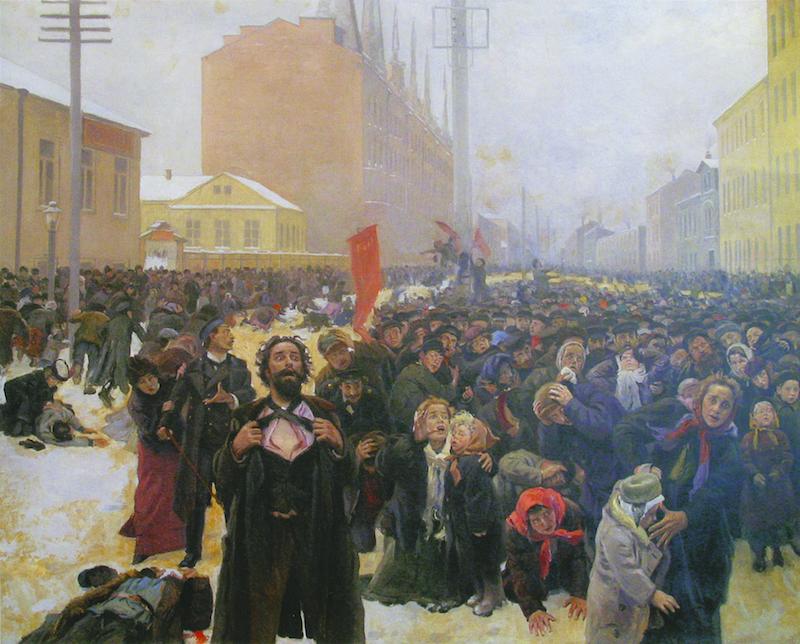
A single management center for the First Russian Revolution really did not exist. But there was one man who can be boldly called the petrel of that revolution. George Apollonovich Gapon - it was he who initiated the open confrontation.
Gapon was extremely popular. If at that time the press had chosen Man of the Year, in 1905 and 1906 he would definitely become the main candidate for victory in this nomination.
JUDAH OR BUREVESTNIK?
However, this man entered the Soviet “holy calendar” as a fallen angel, certainly a negative character, Judas and a provocateur. In one of the historical-revolutionary films, the role of Gapon was impressively played by Nikolai Karachentsov. Let's take a look at the 1982 review of the year: “The actor managed to expose the paradoxes of treacherous psychology in a matter of minutes of screen time.” The name of the priest, who organized the march of workers to the king, became synonymous with betrayal, bloody provocation. "Pop Gapon!" - curse, and only. True, Georgy Gapon earned such a reputation only decades later, and in 1905 everything was different ...
“Never and no one ... before my very eyes captured listeners as much as Gapon, and not at a working meeting, where it was incomparably easier to speak, but in a small room at a small meeting, giving a speech consisting of almost only threats. He had a true oratorical talent, and, listening to his words filled with anger, I understood how this man conquered and subjugated the masses. ”
- wrote one of the leaders of the Combat Organization Boris Savinkov, not the most enthusiastic person in the world. Then he envied Gapon. And not only he.
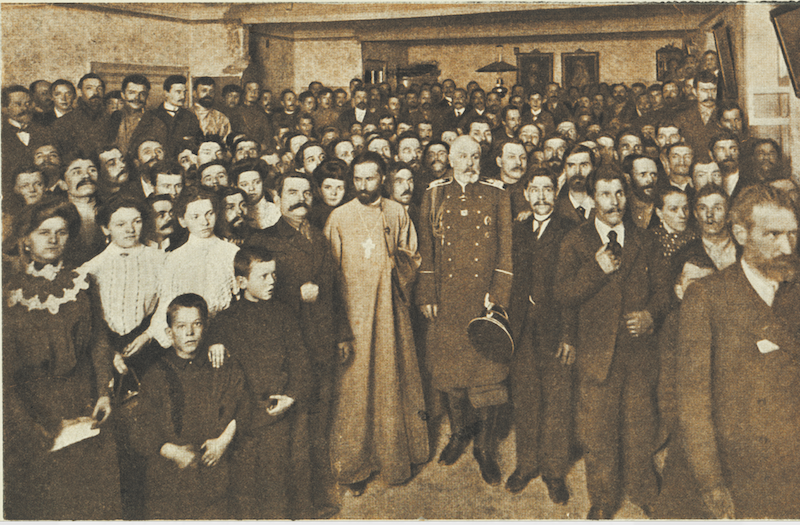
Meanwhile, captious contemporaries were skeptical about Gapon's intellectual abilities. One of the members of the Foreign Committee of Bund, with whom Gapon met in Geneva 17 in March 1905, remembered his interlocutor in this way:
“Man, he is undoubtedly observant, knows how to recognize people and knows the psychology of the masses. In addition, he is cunning, on his mind and went through the school of diplomatic art (albeit, quite elementary ...). He is a very unintelligent person, ignorant, completely unaware of questions of party life. He speaks with a strong Little Russian accent and poorly expresses his thoughts, has great difficulty when confronted with foreign words (for example, “Amsterdam” says this: “Amsteders” ...) ”
.
However, speaking to the workers, George Gapon did not take the intellect, but just the emotionality and talent of the improviser.
HIS NAME, NAME OF THE LEADING REVOLUTION, HAD BEEN TRANSFORMED FROM SET TO UST, FROM WORKERS TO PEASANTS. YOUR PORTRAITS CAN BE FOUND ANYWHERE: IN THE CITY AND VILLAGE, IN RUSSIANS, POLEKS, EVEN JEWS
The revolutionary preacher has become a sought-after figure. He possessed hypnotic power over a gullible congregation. Ambitious, he adjusted to the demands of society, tried to be on the crest of a wave - and saddled the bird-glory. His fans saw in front of him a teacher and a companion who was self-righteous. Pious lover, perhaps a miracle worker. The power of persuasion went to him indomitable. As a Chrysostom, he was holding an audience in his hands, infecting them with his ideas.
MONUMENT LENIN
Gapon - the same age as Vladimir Ulyanov (Lenin). He was born in the village of Bilyky, Poltava province in 1870 year. His father, a hereditary peasant, served as a parish clerk. Peasant son graduated from college, and then Poltava Theological Seminary. He was one of the first students - no more, but no less. Do not avoid scandals. Achieving good grades in dogmatic and moral theology, he told the teacher:
“If you don’t set“ four ”for me and I don’t get into the first category, then I will ruin myself and you”
. This audacity of a seminarist was remembered by teachers for a long time. Although the seminaries generally reigned in a nervous situation, the future priests were brought to exhaustion, and nervous breakdowns often happened.
Gapon still in college carried away by tolstovstvom. One of the teachers, IM Tregubov, introduced him to the forbidden works of the graph. Christianity according to Tolstoy inspired those who became disillusioned with “official” Orthodoxy. It seemed that here it is, the truth is real, evangelical, and not inquisitorial. Ivan Tregubov hoped that his disciples would become priests and bring Christianity to the people cleansed by Tolstoy.
However, Tregubov did not manage to “conduct double bookkeeping” for a long time: in 1888 he decided to openly break with Orthodoxy. A spectacular mystery arose in his fantasies: the people should come to the banks of the Dnieper and, as idols, renounce the church shrines. Soon the "free Christian" found himself in exile.
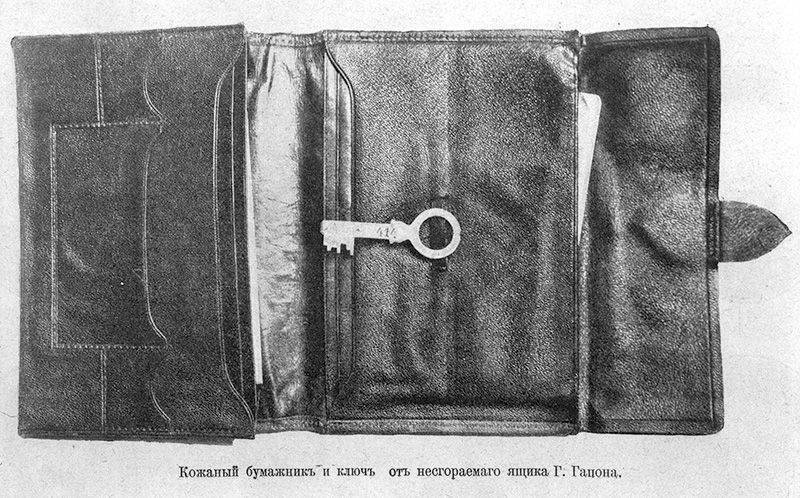
When George Gapon will catch up with world fame, Ivan Tregubov will publish his passionate notes about the famous student in the Parisian liberal opposition magazine Liberation:
“I haven’t had any news about him lately, but a peaceful, unarmed strike by St. Petersburg workers organized by him on religious grounds showed me that he remained faithful to those ideas that 15 related us years ago and which, as I know from my personal experience with extraordinary thirst are perceived by the Russian people. The Russian government hastened to remove me for propaganda into exile, and now, probably, it will send Gapon to the same place, if not to the other world. But let it be known to this wild, obsolete government that, besides Gapon, there are other priests like him and not priests in Russia, and sooner or later with their help such a general strike is finally organized, which will sweep away a necessary, except for a handful of villains, the rest of barbarism - autocracy. And you, dear friend Gapon, know that all over the world your cause has caused universal delight and love to you for all those who, like you, want to free the working people from all its oppressors, and remember that your work will not die. ”
FATHER GAPON
George Gapon was also thinking of breaking with the Church, but in 1896 he was ordained priest. It is believed that he went to this under the influence of a young wife - a merchant's daughter. By decision of the Bishop of Poltava Hilarion, who patronized Gapon, Father George began to serve in the parish church of All Saints at the city cemetery in Poltava. The temple was not empty. Hundreds of people came to the sermons of the young priest. It seemed that he was giving birth to images right before the eyes of the flock. It attracted. Moreover, Gapon demonstrated unselfishness. He made the demands for the beggars and the hapless for free. A responsive soul, a true servant of Christ ...
A new century found Gapon in the capital. He preaches Christ in the work environment, participates in charitable missions, helps the poor. His first undertaking was called flowery - "Society of Adherents of Reasonable Christian Holidays."
By the time the seminarians went into the revolution for almost half a century. Someone was disappointed with church bureaucracy, others were captivated by the charm of materialistic philosophy. Gapon was different from those who left the church walls, fascinated by the labors of the materialists. He did not have explicit anti-Christian motives. In the eyes of the fans, he remained a father - and deliberately used this halo. It is another matter that the protective and monarchical spirit of the Church to Gaponu was alien, and he distanced himself from it. He was attracted by the ideas of Christian socialism. Workers became his flock.
GAPON - “MAN IS VERY NON-INTELLIGENT, ILLEGAL, NOT REALLY UNDERSTANDING IN PARTY LIFE ISSUES, BUT, UNSUMBLELY, OBSERVATIONAL, IS ABLE TO KNOW PEOPLE AND KNOW PSYTHE ITS PSYTHE PSYTHE PSYCHE.
The proletarian community is a large collective, where it is easy to conduct propaganda. With a small conservative rural communities do not compare them. For a preacher, propagandist, and agitator, the working environment is like gold mines.
“The working class is a collective of such power as revolutionaries did not dispose of as a means of warfare either during the Decembrists’ time, during the period when they were among the people, or at the moments of mass student demonstrations ”
- wrote the shrewd chief of the Special Section of the Police Department S.V. Zubatov.
In the bureaucratic circle of that time, Sergey Zubatov was a star of the first magnitude and, as it should be for bright personalities, knew ups and downs. His path is somewhat similar to Gaponovsky. From gymnasium years, he was fond of unreliable authors: avidly reading Chernyshevsky, Darwin, Marx. He was friends with the People's Volunteers, succumbed to their influence, he himself agitated young comrades. And then - he chose the fate of a secret employee of the detective department and began to get used to the revolutionary environment with a special task. It was he who proposed the formation of legal trade union workers who would be under the tutelage of the police. Perhaps it was the most effective tactic to combat rebellious moods. "To press and not to let go" was meaningless.
Georgy Gapon gained incredible popularity among workers and Zubatov became interested in this capacity. And the fact is that Gapon went to cooperate with the police and took the money, "the contact was established." But whether he sold with giblets? Gapon would never agree with such a verdict - not only at the court session, but also before himself. Yes, Sergei Zubatov helped him create an organization, but Father George believed that the police custody (administrative nannies) only harms the cause. They argued, but did not quarrel. In 1903, Zubatov’s career collapsed, and Gapon only gained altitude.
"GIVE PEOPLES ARTIFICIAL TO WORRY ..."
Gaponovskoye "Meeting of Russian factory workers of St. Petersburg" to 1905 year was the most powerful non-state political force in Russia. Perhaps, after Emelyan Pugachev, the masses were not following anyone with such enthusiasm.
Gapon entered into force. Sodal ideas spread throughout wider circles. Both in the student and in the working environment loyal allegiance was not honored. And George Gapon understood: in order to become a ruler of thoughts, you need to call for cardinal changes. How is Pushkin? "Let the people skillfully worry ...". But to represent Gapon as such a hypocritical and overbearing provocateur is to simplify the picture. He did not like the world in which the palaces are adjacent to huts. He believed that the current system is a deviation from the Christian ideal and quite sincerely fought "for the truth." And by what means it seemed that he was of little interest.
The fateful days came at the end of 1904. Four members of the society "Meeting of Russian factory workers in St. Petersburg" were fired from the Putilov factory. Gaponovtsy did not give up their trouble - they rose to their defense. The trade union pressure on the capitalists did not help, the strike too. The next instance is the king.
The comrade of the revolutionary father Nikolai Varnashev recalled that it was Gapon who initiated the January 9 performance.
"The people interfere with the officials, and the people conspire with the king"
- his words in those days. He assured the flock that, if we turn to the sovereign "the whole world", they would not dare to dismiss the petition.
It must be said that a mass unauthorized march to the emperor — even with banners — was then perceived as something unprecedented, daring. Here it is time to recall the Moscow Copper Riot, when they went to the Tsar Alexei Mikhailovich. No less audacious was the main demand - the convocation of the Constituent Assembly, in which the people's representatives could defend the rights of the workers, in other words, they demanded that the tsar restrict autocracy ...
Gapon’s assessments of the king and the situation as a whole on those nervous days fluctuated sharply, including he did not rule out a bloody denouement of events:
“Will shoot. Shoot the idea of the king! And sacrifices are so inevitable! Warn - who is afraid, will not go, and die - so die with music! "
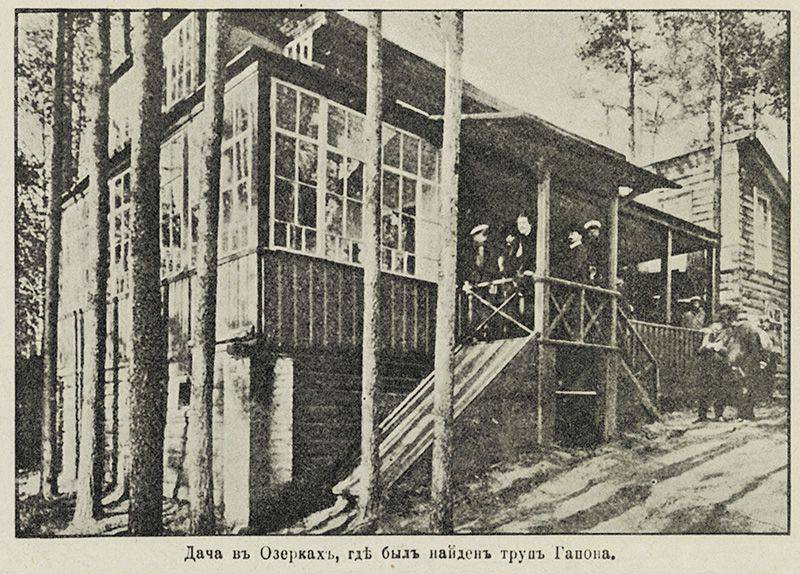
BLOODY SUNDAY
9 January, he was on the square at the Narva Gate, confidently walked along with everyone. And 150 thousand workers took to the streets - one fifth of the able-bodied population of St. Petersburg! “Go ahead, comrades, freedom or death!” Shouted the leader of the procession. And together with everyone, Gapon was horrified by the shots. Survived: one of those who were close to him was killed and, falling, dumped him on the pavement, covered his body.
Together with the Social Revolutionary Peter Pyotr Ruenberg, they reached the nearest gate. Rutenberg then wrote:
“The yard into which we entered was full of writhing writhing and darting bodies. “There is no more God! There is no king anymore! ”Gapon croaked, throwing off his fur coat and cassock.
. They quickly put on a coat and hat given away by someone, and most likely took him away from the place of execution. Already in another courtyard, right near the woodpile, Gapon was cut (his hair was picked up by the workers and was kept by some almost like a relic). By evening, Peter Rutenberg took him to the apartment of Maxim Gorky.
The next day, not without the participation of Rutenberg, George Hapon wrote his first revolutionary "leaflet":
“The Beast-tsar ... let us take revenge, brothers, to the king cursed by the people and to all his snake-like offspring, to the ministers, to all the robbers of the unhappy Russian land. Death to all of them! ”
Gapon was lost. He was taken to the village, where he had to wait until a fake passport was made for him. But the nerves could not stand: he crossed the border and went to Geneva.
“Moving through the whole of Europe without a tongue and with fear of being recognized and arrested ended up in that he did not find the person to whom I had sent him. For two days he walked around the city helpless and exhausted. I finally went to Plekhanov
[1], ”recalled Peter Rutenberg.
EUROPEAN TURNEY
The leaders of the revolutionary emigration greeted Gapon with enthusiasm. Obviously under the impression of the January events in St. Petersburg, they began vying to offer him their friendship and cooperation. The shooting of the procession did not destroy his reputation, on the contrary, after that tragic day, Gapon’s authority at first only increased.
“All the facts speak in favor of his honesty and sincerity, since the task of the provocateur could no longer include such a powerful agitation for the further continuation of the uprising”
- noted Vladimir Lenin. In 1905, he saw him not as a competitor, but as a venerable demon of revolution. Perhaps, he fell under the spell of George Gapon.
The proximity of the tactical views of Lenin and Gapon was reinforced by the mutual sympathy between them. Hapon, whom Vladimir Lenin had honored as a “red monster” in early February, by the spring of 1905, turned into a “loyal revolution, enterprising and intelligent” person, and the organizer of workers' march to the king, calling the leaders of the socialist parties “narrow-minded talkers,” He made an exception only for Lenin, his peer, whom he revered as a “good and intelligent” person.
At the peak of glory, Father George saw himself at the head of a movement that would avenge Bloody Sunday. The ambitious “black, lean, low priest with fast-running mocking eyes” imagined himself the leader of the entire Russian revolution, behaved defiantly, and, despite the enthusiastic reception, relations with the emigre centers did not go well with him. By the fall, his authority in foreign revolutionary circles had dropped to zero.
Furious ambition did not allow him to live in peace, without anyone leading anything.
“Without a broad objective mind and without proper scientific training
, - recalled one of his former associates, -
Gapon did not know how to understand his present position and assigned too much space to his person in the labor movement. ”
. However, the workers still worshiped him. Boris Savinkov says so about the moods of 1905 – 1906:
“His name, the name of the leader of the revolution, went from mouth to mouth, from workers to peasants. His portraits could be found everywhere: in town and country, among Russians, Poles, even Jews. He first stirred up the urban proletariat. He first decided to become the head of the workers who had risen. Neither the general strike of 1905 of the year, nor even the December barricades could overshadow the image of this man, from whom they expected new speeches, they expected that if he started a revolution, he would end it ”
.
“HE WAS A TYPICAL LONELY”
After 17 in October 1905, Gapon again appeared in Russia. "
About nothing else but bombs armory warehouses, etc., now he does not think
- recorded one of the people close to him. -
After Bloody Sunday, he kept saying that it was time to move on from compromise to action, did not show the same hope for the tsar and the government, tried to revive his “Assembly of Factory Workers”. ”
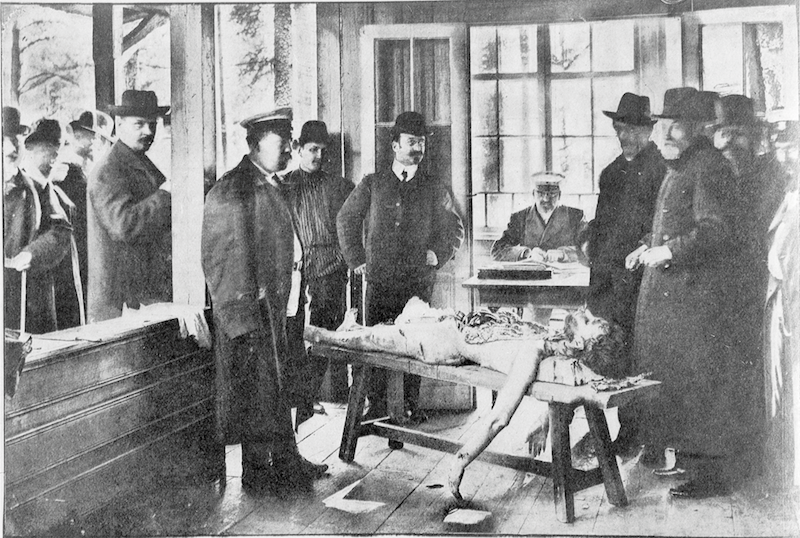
However, at the same time, George Gapon constantly conducted secret negotiations with influential dignitaries, including the chairman of the Committee of Ministers, S.Yu. Witte. The government again hoped to use the fiery priest to keep the workers from participating in the armed struggle. To strengthen Gapon’s position in the working environment, Sergey Witte singled out 30 thousand rubles to him.
George Gapon tried to establish contact with the party leaders, but did not know how to take a place in their hierarchy. And on the sidelines did not see myself. Even in a rebellious revolutionary environment, Father George seemed impetuous, uncontrollable.
“He was a typical loner. As a demagogue, inconsistent in his leitmotifs, he could not, physically unable to participate in the common, "worldly" development of a tactical line of conduct, sing with others as equals and then coordinate his actions with the actions of his comrades. Party affair is a choral affair. But Gapon, if he had made a promise to adhere to such a line of conduct even sincerely, still could not keep him to the end. ”
- argued Viktor Chernov, the leader of the Social Revolutionaries, who knew Gapon well.
NOT PARTY BUSINESS
The famous revolutionary ass was 36 years old - the right age for the adventurer.
But fate decreed otherwise.
28 May 1906, at the country house in Ozerki near St. Petersburg, was awaited by representatives of the Social Revolutionary Party. They had irrefutable evidence: Gapon is playing a double game. Peter Rutenberg, who rescued Hapon in January of 1905 and helped him settle down in Europe, summoned a recent friend to a frank conversation. He, unaware that they were being overheard by workers hiding in the next room, offered 25 thousand rubles to the socialist revolutionary Rutenberg in exchange for issuing a group of party members to the police ...
“WILL BE SHOT. SHOOT THE IDEA OF THE KING! AND THE VICTIMS ARE ALSO EQUAILABLE! WARNING - WHO IS AFRAID, WILL NOT GO, AND DIE - SO TO DIE WITH MUSIC! ”
The body of Gapon will be discovered only in a month: he was either strangled or hanged. They buried the failed leader of the revolution with all the honors. Activists demanded revenge: comrades did not believe in the betrayal of their leader and accused the secret police of murder. The Social Revolutionaries did not take responsibility for the "execution" of Gapon. “The Central Committee, referring to its ruling, refused to recognize this case as a party matter,” emphasized Boris Savinkov.
The inexorable “verdict of history” was announced much later, in 1938, in the “Short Course on the History of the WKB (B)”: there he is a provocateur, who was tasked with shooting the peaceful demonstration and “sinking the labor movement in blood”. This is a simplification: George Gapon was not an agent of the secret police - he played his game on several boards at once and risky used his connections with the police for his own purposes. This is a crazy revolutionary time, when even an Orthodox priest can retrain in a gambling and unscrupulous political player.
[1] G. Plekhanov (1856 – 1918) - Marxist theorist, philosopher, prominent leader of the socialist movement. During the revolution, 1905– 1907 was in exile.
Information